For 30 years, there has been an unprecedented increase in mental disorders worldwide, a trend that has persisted in countries with diverse populations regarding economic well-being and cultural and religious backgrounds.
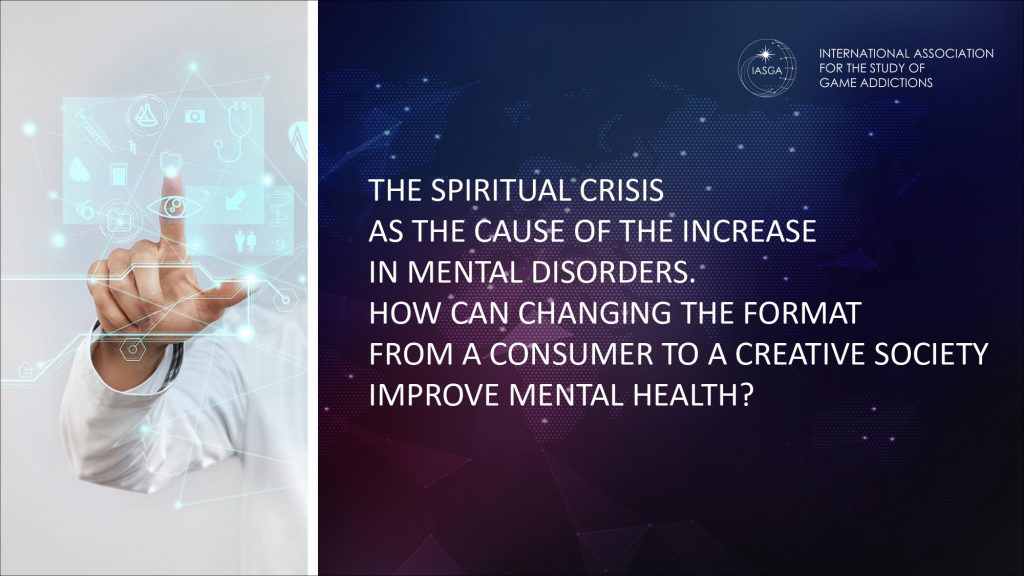
When we examined the prevalence of individual mental disorders in the various countries in which statistics are well collected, we found an upward trend over the last 30 years in most studies. Particularly alarming is the steady increase in the prevalence of chronic distress, anxiety, depression, eating disorders, addictions, self-destructive and aggressive behaviour and other mental health problems among children, adolescents and young people over the last decade. The epidemic of mental illness is an inevitable consequence of all the manifestations of the global crisis facing humanity today. Above all, the effects of climate change, exacerbated by economic insecurity to the point of starvation and the impoverishment of billions, the upsurge of wars, violence and brutality in society and the forced migration of populations due to all these factors.
From the early 90s and 2000s, the prevalence of mental disorders gradually increased, and between 2012 and 2015, there was a dramatic jump. It is starting to grow exponentially. According to the official WHO statistics, every 4th-5th person in the world suffers clinically from some kind of mental disorder and 20% of children and adolescents. About 10-14% of adults suffer from severe mental illnesses, such as clinical depression, bipolar disorder, schizophrenia, and neurodegenerative diseases. Every 40 seconds someone in our world dies by suicide.
More than 30-40% of people (in some countries, this figure reaches 50%) suffer from mental disorders in their lifetime. More than 20% in the last 12 months, teenagers and young people suffer from anxiety, stress and depression, lose the meaning of life and interest in whatever, cut up their bodies, commit suicide, become victims of violence or show aggression themselves. And this is only according to official figures. Only 25-30% of people with mental disorders go to official psychiatric services, and only 5-10% of those with addictions. We don’t even realise the true extent of the prevalence of mental disorders.
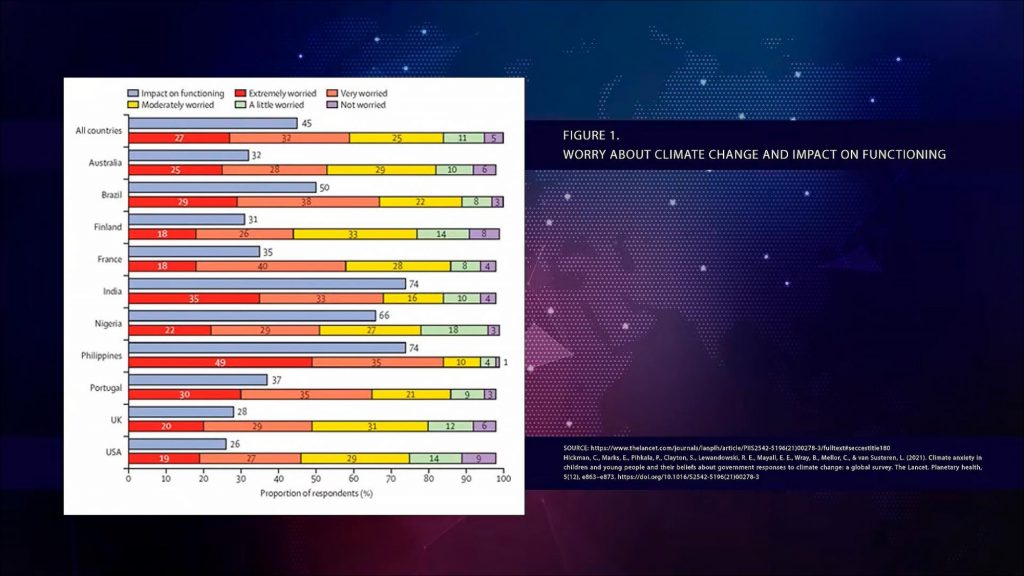
A study of 10,000 young people between the ages of 16 and 25 from 10 different cultural, economic, and climatic backgrounds was conducted in 2021. Structured interviews and surveys were conducted to find out what emotions they felt about climate change, how it affected their daily lives, and how they thought about the effectiveness of governments in responding to the climate crisis. The results were shocking. Over 50% reported each of the following emotions: sadness, anxiety, anger, powerlessness, helplessness and guilt. However, almost 60% said they felt “very bad” or “extremely” worried about climate change. More than 45% of participants said that their attitude towards climate change had a negative impact on their daily life and functioning, with many (75 to 83%) of survey participants reporting high levels of negative thoughts about climate change.
“Distress about climate change is associated with young people perceiving that they have no future, that humanity is doomed, and that governments are failing to respond adequately, and with feelings of betrayal and abandonment by governments and adults”.
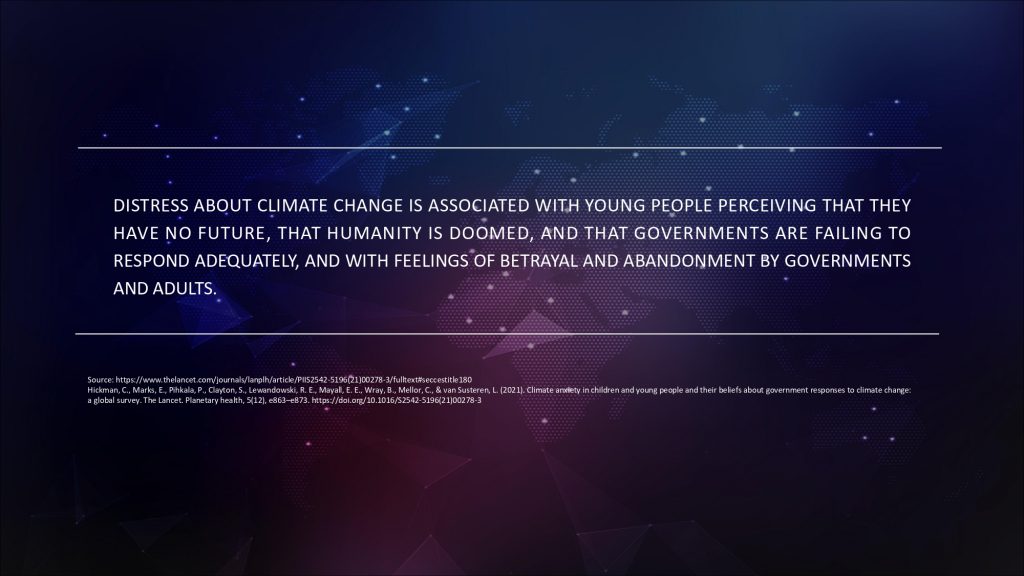
For example, in the USA, data from a nationwide qualitative study reported a 52% increase in the frequency of major depressive episodes diagnosed the year before in adolescents and a 63% increase in young adults aged 18-25 over almost ten years.
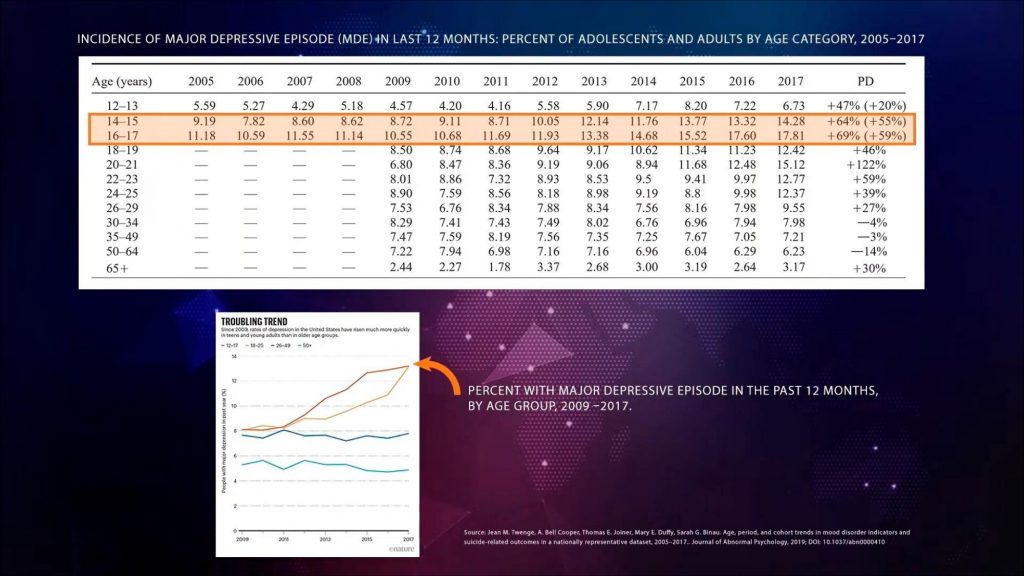
Various forms of suicidal behaviour increased significantly over the past year among adolescents and young adults,
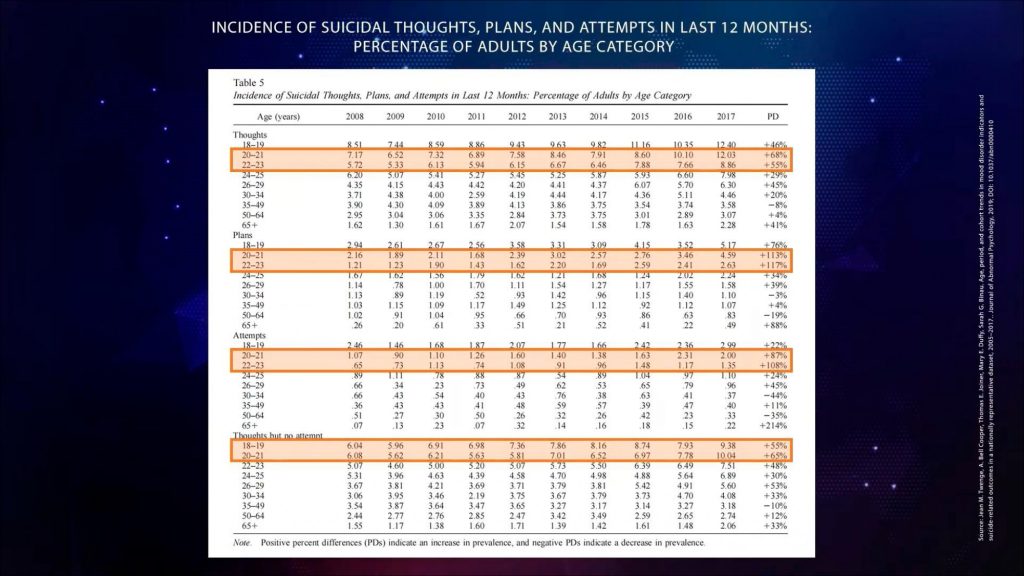
and the prevalence of completed suicides increased by an average of 47% among young adults.

The prevalence of severe psychological distress in the same age category increased by 71% from 2008 to 2017.
Note! The graphs and tables show a sharp jump, an exponential increase in the prevalence and incidence of mental disorders, especially among the youth, from 2014-2015.
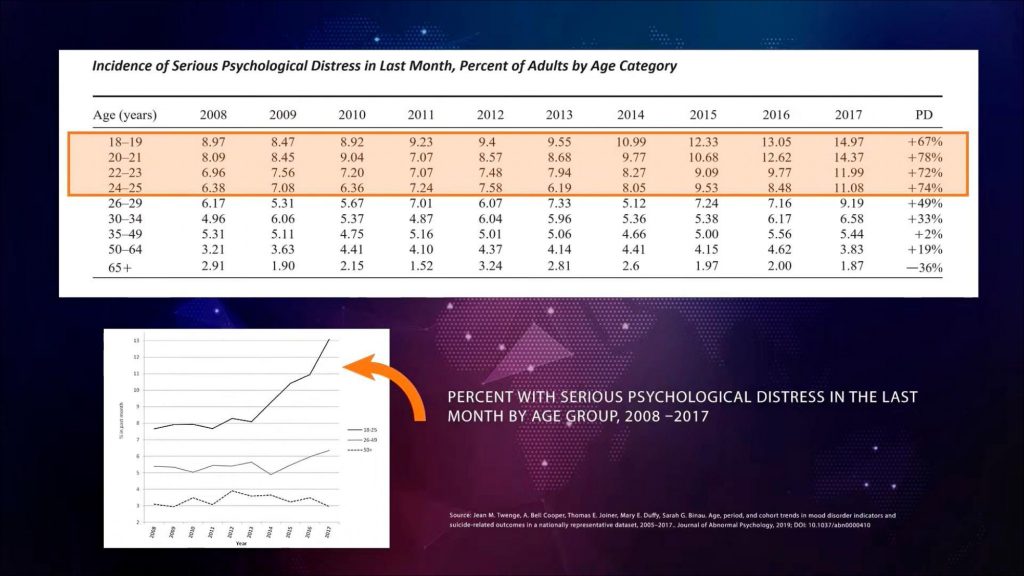
This same trend is confirmed by another study that showed an increase in depressive symptoms among adolescents in the US from 1991 to 2018
Necessary measures of emotional stability, mental health and behavioural disorders are the rates of suicide (auto-aggression) and homicide (aggression) in society.

According to data provided by the US National Center for Health Statistics, the overall suicide rate in the United States increased by 35.2% from 2000 to 2018. However, in the category of children, adolescents 10 – 14 years old, it tripled from 2000 to 2020, and among youth 15 – 24 years old, it increased by 87%.
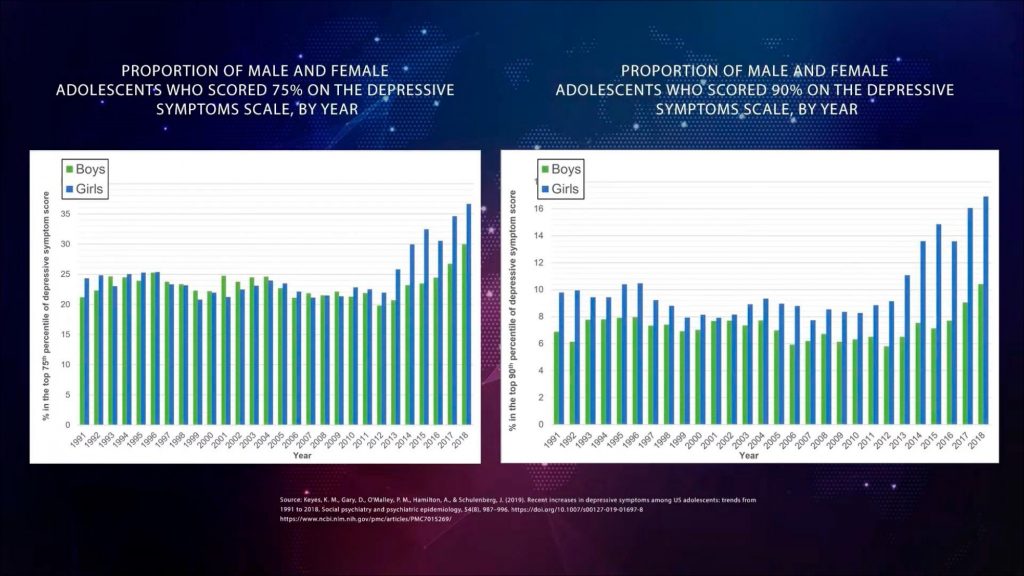
Suicide was the second leading cause of death among 10 to 14-year-olds and 25 to 34-year-olds, and homicide in the 15 to 24-year-old category, second only to accidents.
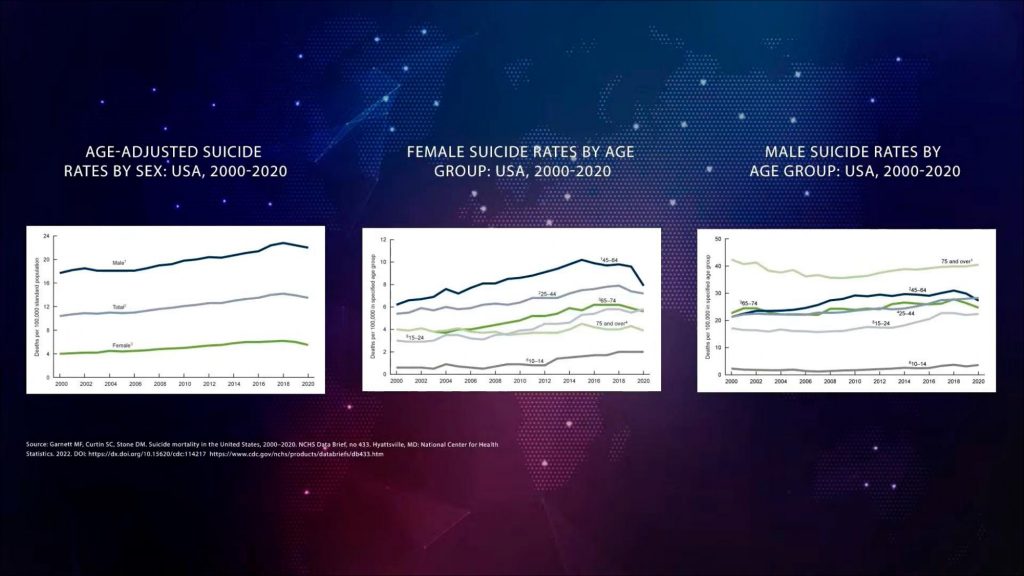
There has been a significant change in the cause of death statistics for children and young people in the US in recent decades, which shows an unprecedented increase in aggression/auto-aggression in our society. We see that accidents and injuries are the leading cause of death in the 1-24 age group, but what are these accidents? For over 60 years, road traffic accidents have prevailed. However, since 2017, firearm-related injuries have become the most common cause of death.
Overall, two-thirds of these deaths were homicides, and 30% were suicides. In 2021, seven children per day were killed by firearms. In the first six months of 2022, more than 300 mass shootings in the US, including the shooting at Robb Elementary School in Uvalde, Texas.
“Every single time I walk into a classroom, the first thing I do is find the nearest exit,” says Osadolor-Hernandez, the student from the University of Chicago. Instead of being focused on her professor’s lecture, she finds herself constantly glancing around to see if anyone looks suspicious. “Every single time anyone just reaches into their backpack, there is a sense of panic that I feel,” she says. “It’s extremely frustrating to have to feel this way, and it’s extremely hard to live with this reality.”

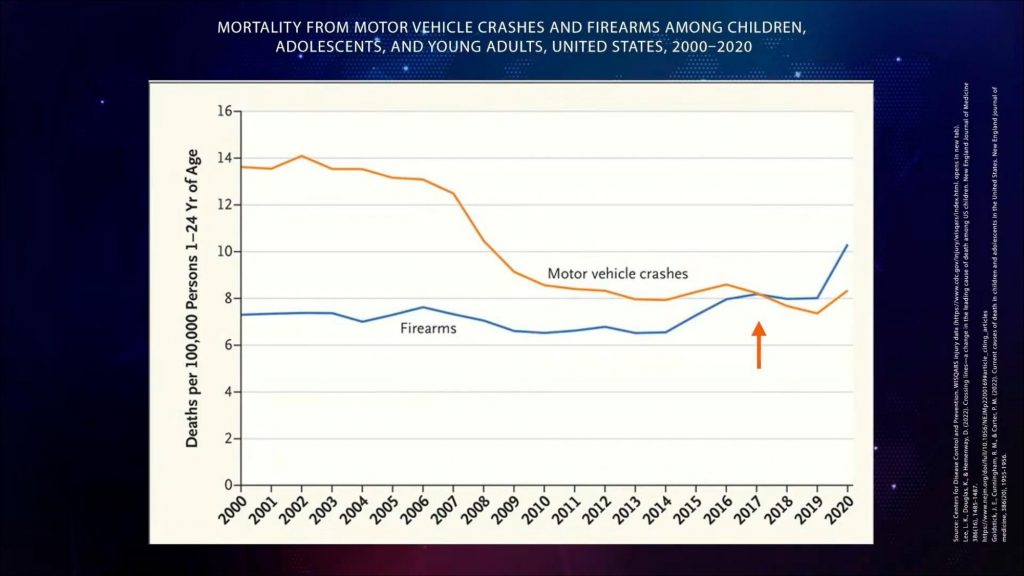
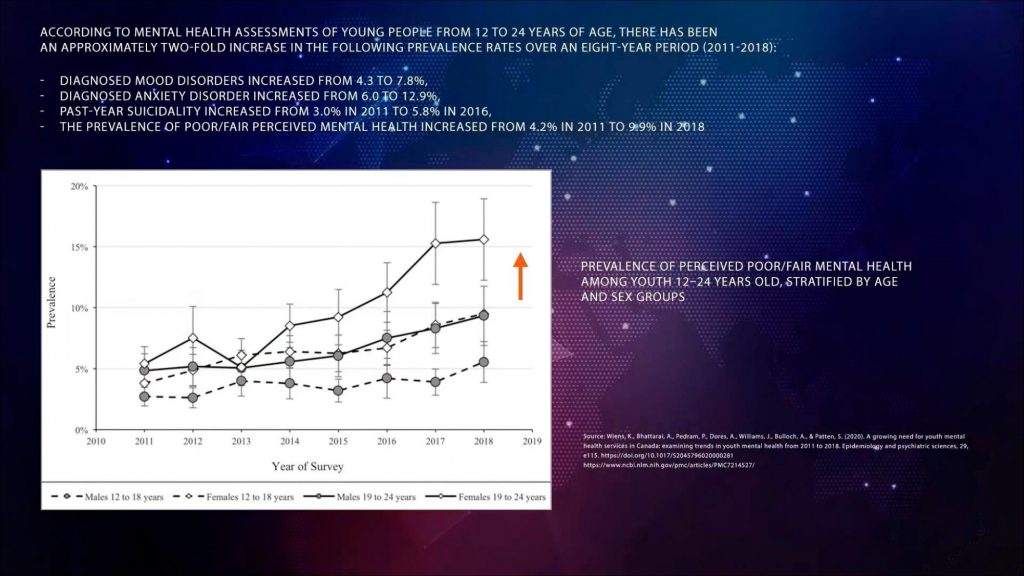
Mental health assessments of Canadian youth show an approximately two-fold increase in mood and anxiety disorders and suicidal behaviour.
There has also been an increase in the number of people seeking mental health services. Canadian experts in Ontario have seen an 89.1% increase in psychiatric emergencies since 2006, particularly among young people from 14 to 21 years old. By 2017, there was a 135% increase in the proportion of young people aged 13 to 17 committing acts of self-harm.
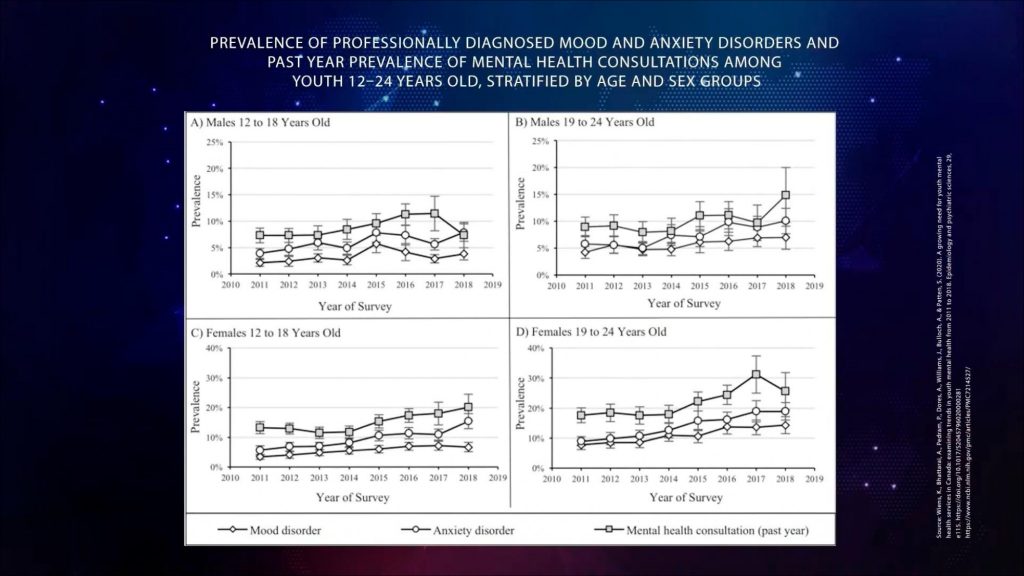
According to a UK NHS report long before the COVID-19 pandemic, rates of mental illness were already rising slowly and steadily. The percentage of adults with mental health problems increased by more than two-thirds between 2000 and 2014.
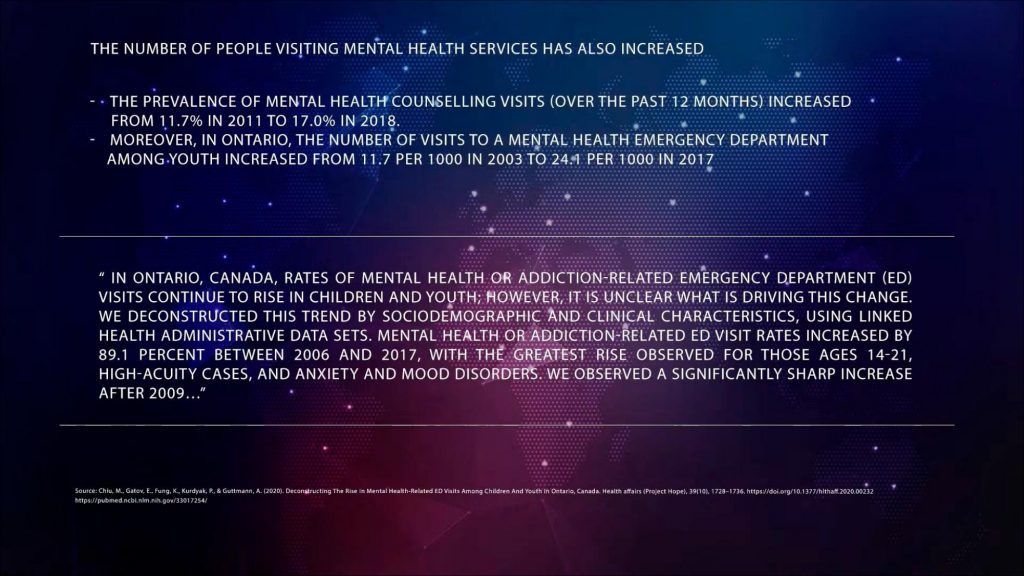
According to the 2014 survey, the prevalence of psychotic disorders such as schizophrenia and affective psychosis has also increased over the past year.
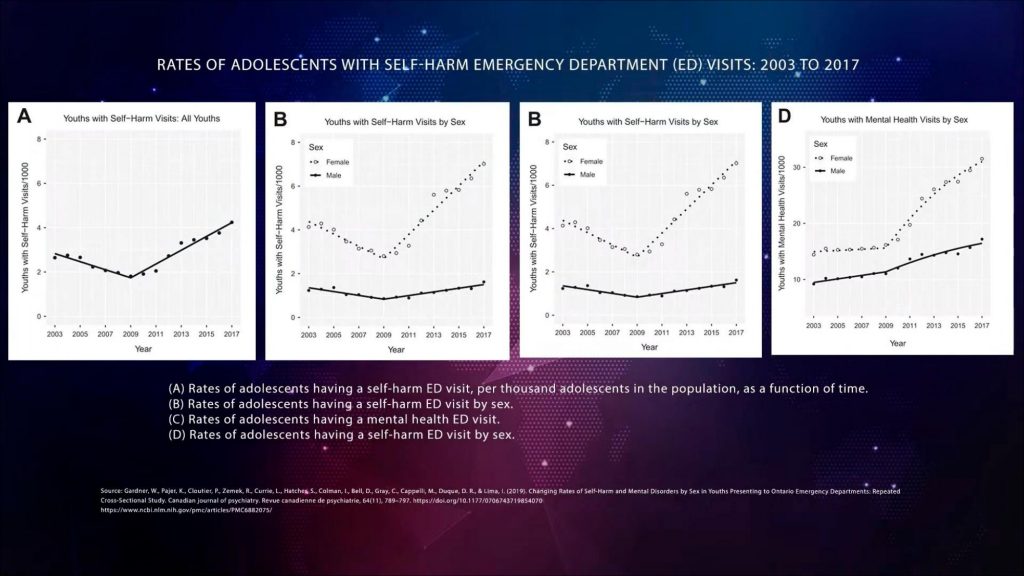
Mental health services in England received a record 4.3 million referrals in 2021 alone, with the number of people accessing mental health services steadily increasing.
In just four years, from 2017 to 2021, the prevalence of mental health problems among children aged 6 to 16 increased from 11.6% to 17.4%. So about 1 in 6 children had at least one mental health problem in 2021, up from 1 in 9 in 2017.
The same pattern of continuous increase in mental health problems is seen in the population of European countries.
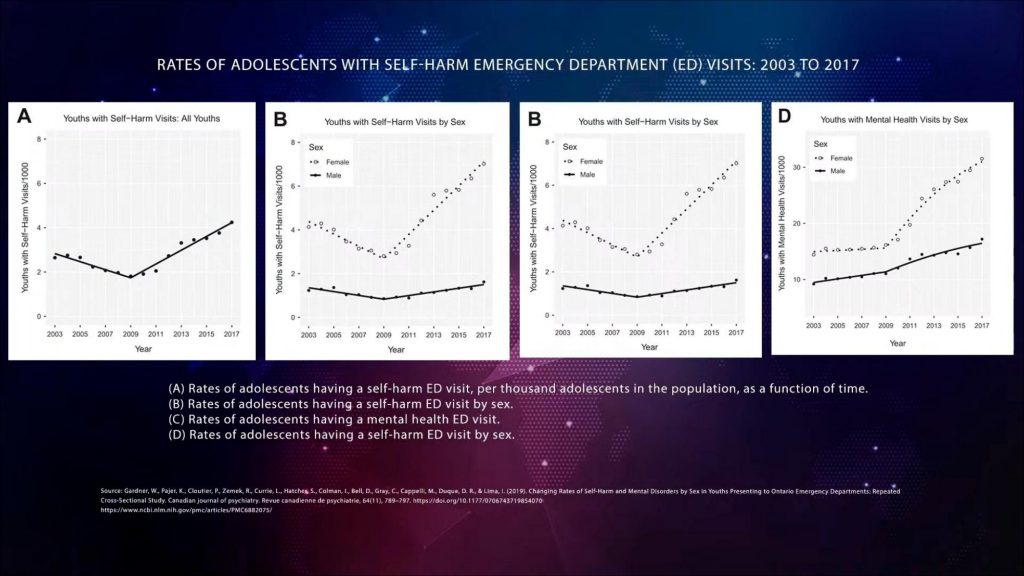
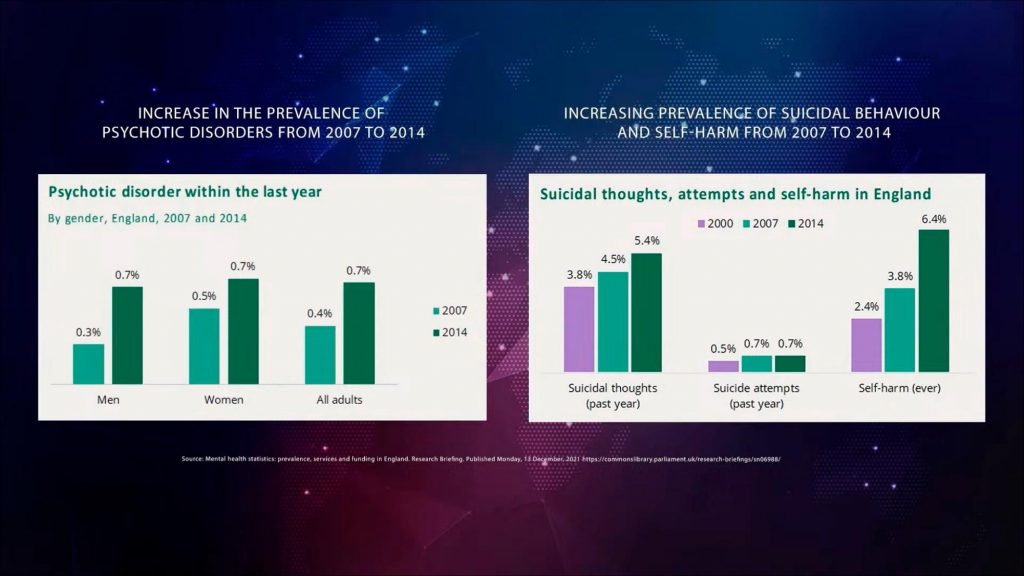
In Germany, for example, between 2000 and 2013, an increase in hospital admissions for all categories of mental disorders, except psychotic, per 100,000 population was observed in the age group 0-19 years.
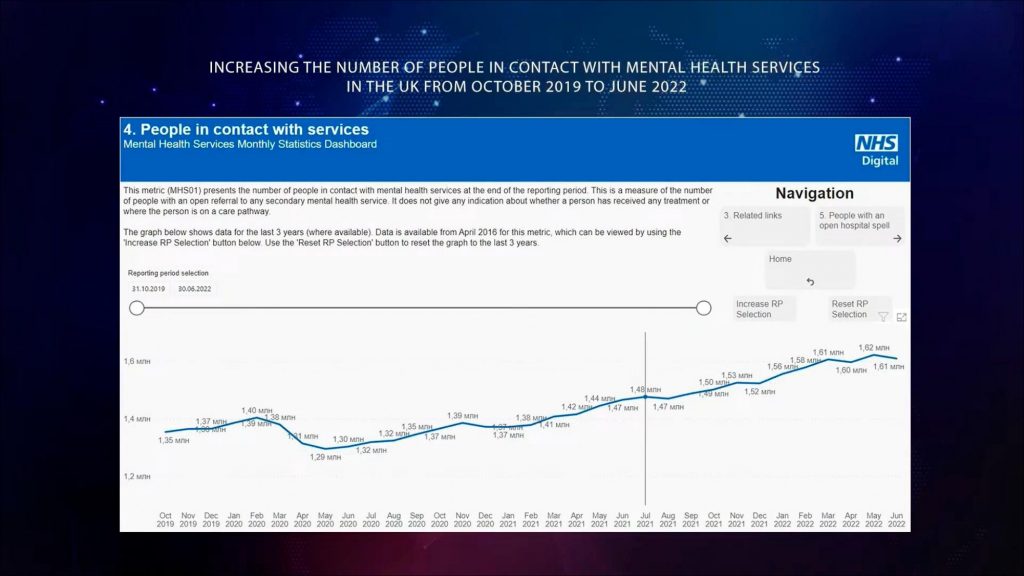
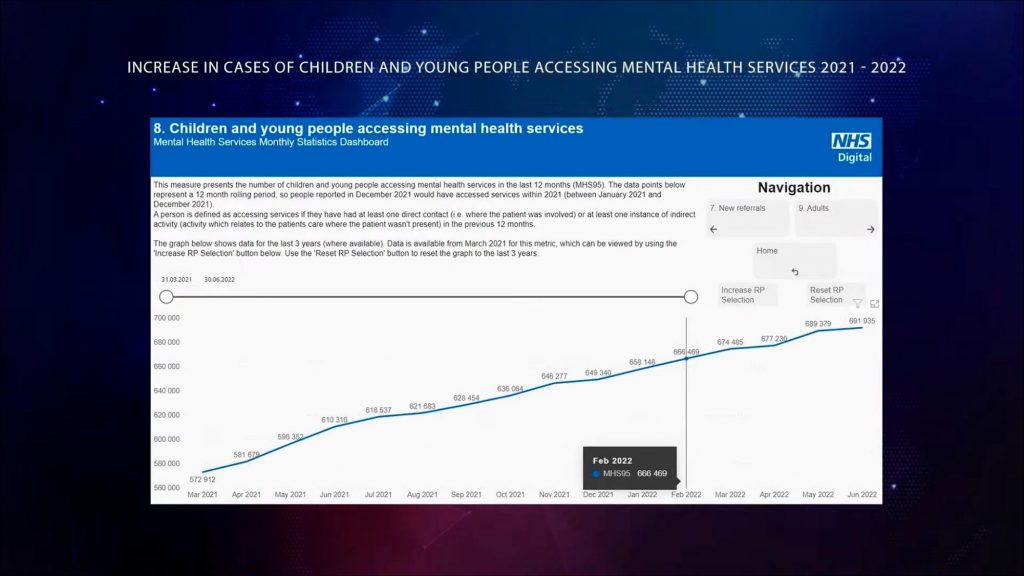
In Belgium, the prevalence of depression increased from 6.73% in 2000 to 9.20% in 2019. Regarding the incidence of depression, there was a decreasing trend from 2000 to 2015, followed by a sharp increase from 2015 to 2019.
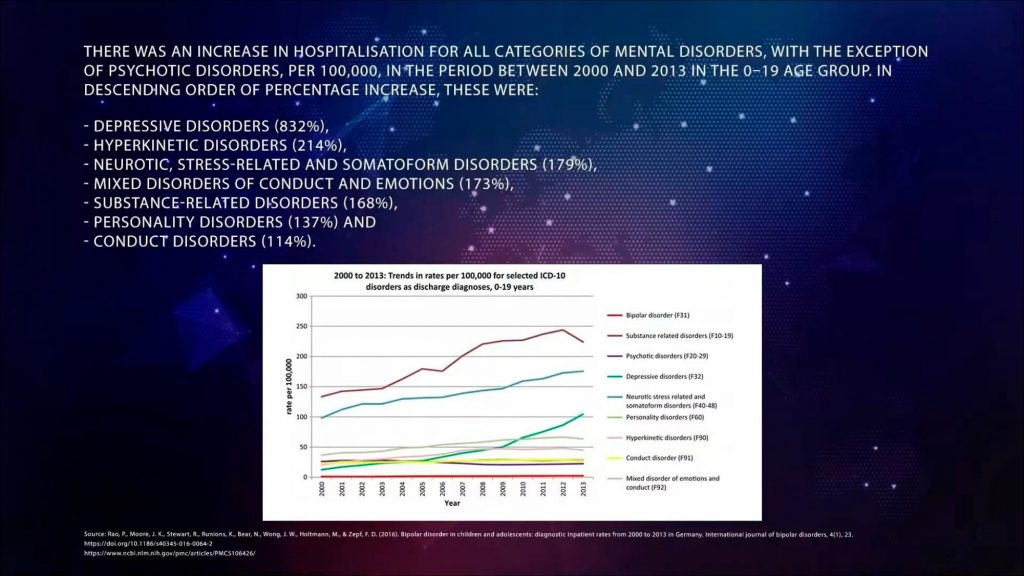
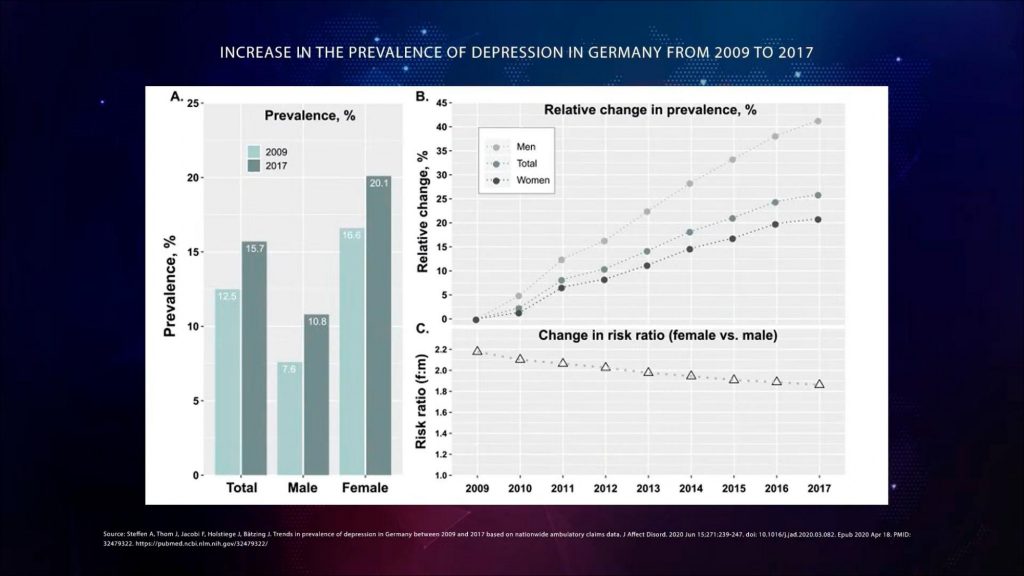
A steady increase in mental health disorders has also been observed in Australia over the last decade:
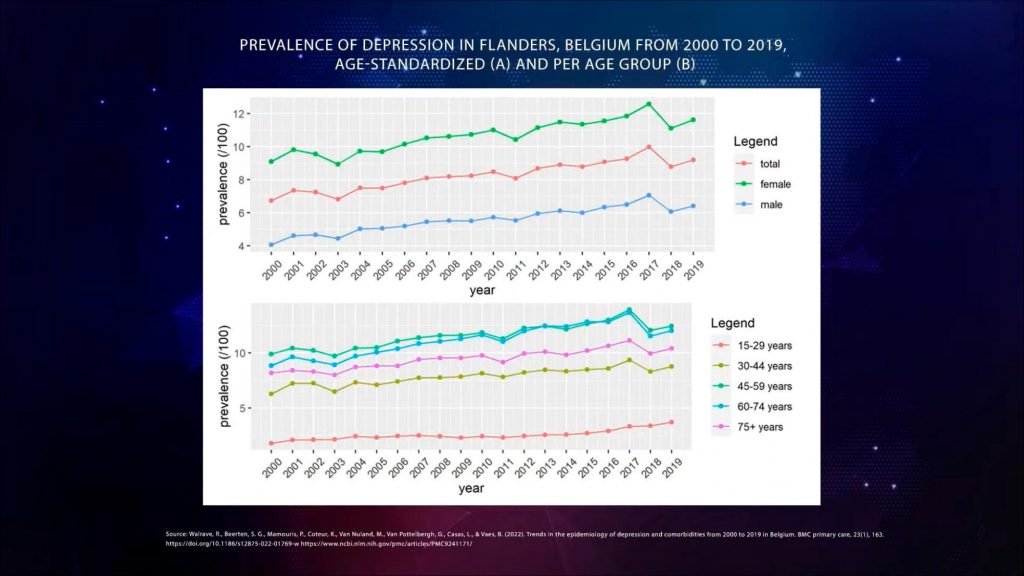
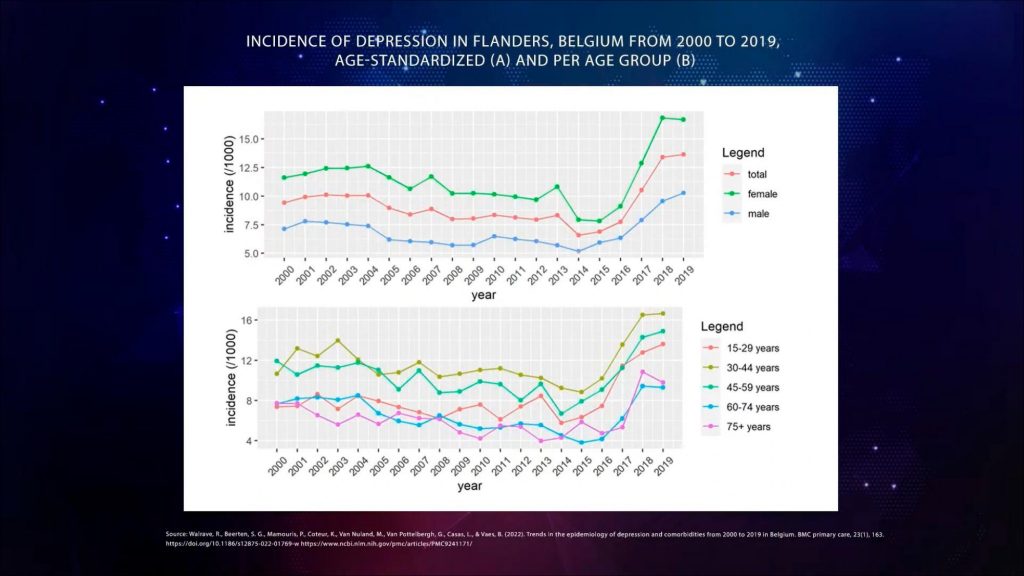
Between 2020 and 2021, the mental health situation for Australians continued to deteriorate. Of the 19.6 million Australians aged 16-85 years: more than two in five had suffered a mental health disorder at some point in their lives. Anxiety was the most common group of mental disorders, followed by depression.
Most disturbing was the fact that there was a shift in mental health disorders to a younger age group. It was in the 16-24 and 25-34-year-old category that all mental disorders, addictions, suicidal and self-harming behaviour were most prevalent. The same trend we see in other countries as well.
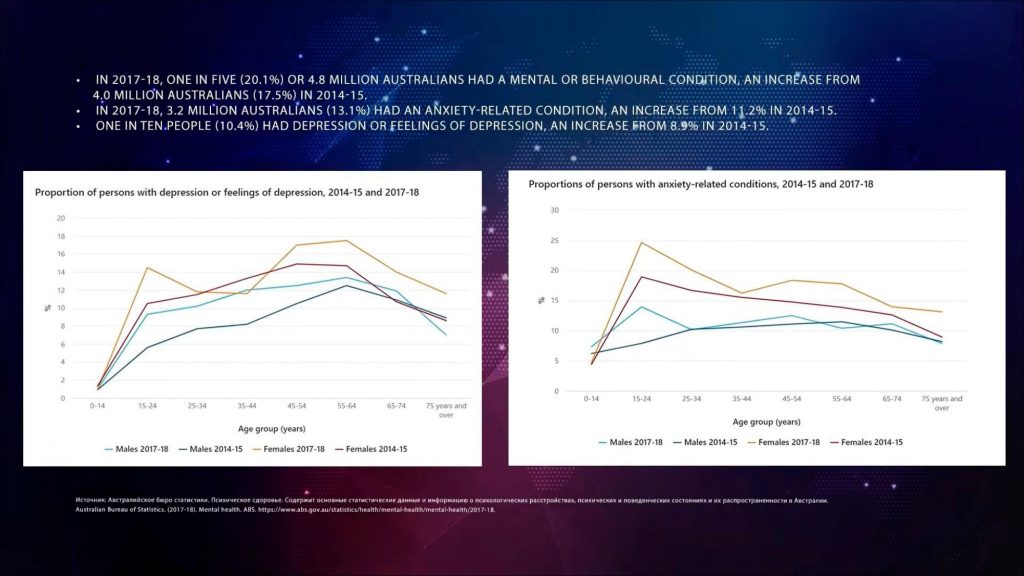
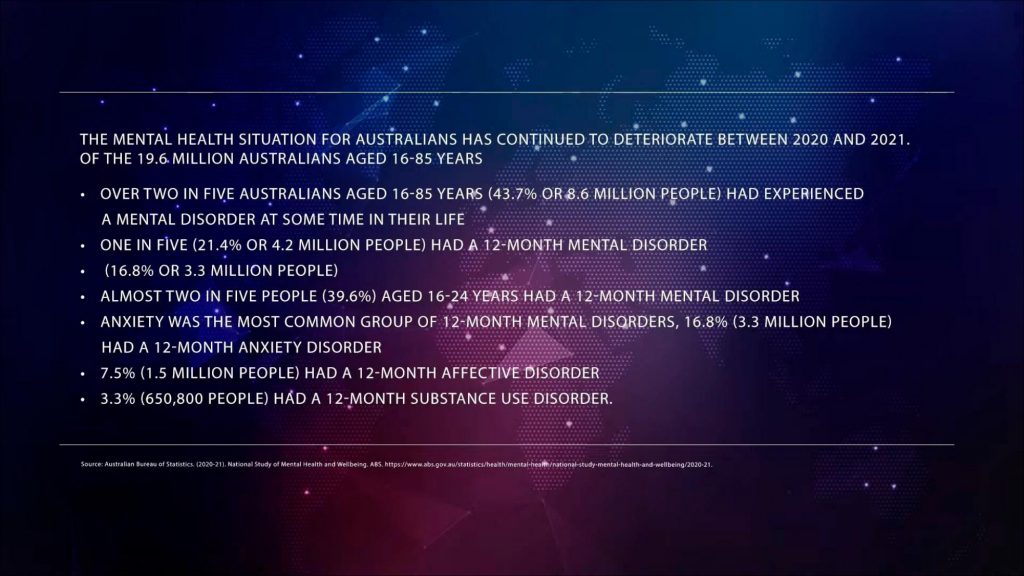
According to the Gallup Institute’s annual Global Positive/Negative Emotional Experiences and Wellbeing Survey, people worldwide will feel more anxious, stressed and sad in 2021 than at any time in the last 16 years. Negative emotions – a combination of stress, sadness, anger, anxiety and physical pain – reached an all-time high last year. But according to Gallup head John Clifton, the global rise in unhappiness began long before most of the problems hit the headlines. Unhappiness has been on the rise for a decade.
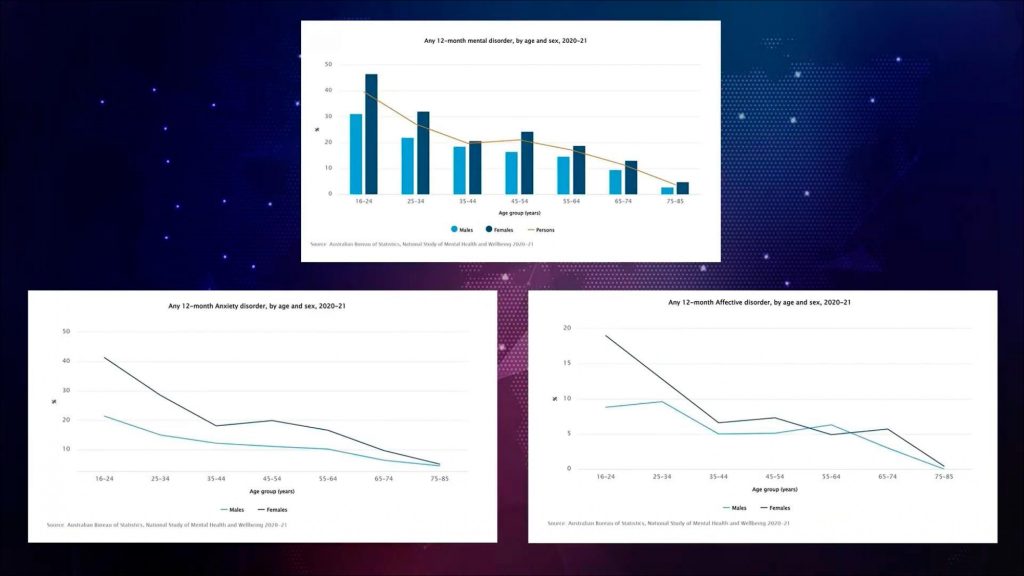
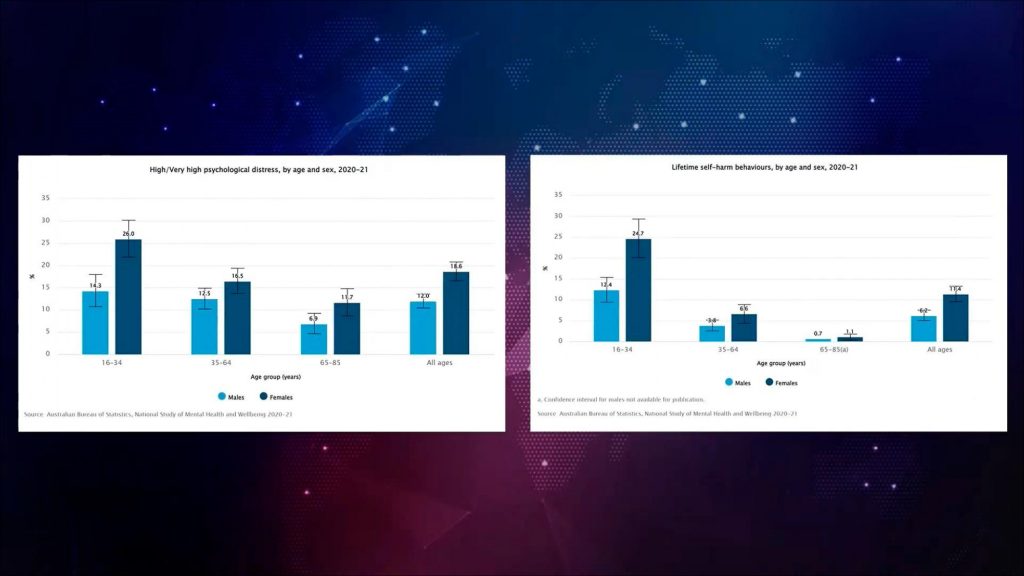

Humanity over the past decades has been sinking into emotional darkness, losing adequacy in relationships, thinking, perception and behaviour, getting bogged down in various forms of increasingly dangerous addictions, and we don’t care? What are they trying to hide from us? Whenever the truth of the growing mental health crisis surfaces, some convenient explanation is given: a pandemic, a war, an economic crisis. Of course, these all matter no one disputes, but they are not causes and predisposing factors. In addition, mental health problems continued to grow outside the context of all these factors. We specifically cited studies before the pandemic and from countries with more stable economies whose populations were not involved in military conflict. Isn’t it time to look deeper and find the root of all these problems?
Look at the graphs from the different studies. From the early 90s 2000s, the prevalence of mental disorders gradually increased, and between 2012 and 2015, there was a dramatic jump. It is starting to grow exponentially. The epidemic of mental illness is an inevitable consequence of all the manifestations of the global crisis facing humanity today. One of the most important factors is, of course, social aspects. It is not just about the standard of living, as mental disorders are equally distributed across all socio-economic spheres. Something is wrong in the format of relationships between people. At the moment we all live in a consumer society with dominant material values. The consumer attitude towards each other in the family, in the collective, between countries, based on selfish desires, leads to conflicts, violence, lies and manipulations between people, and globally to an economic crisis, an increase in crime and wars. In addition, climate change with natural disasters and epidemics are increasing all over the world. All these factors contribute to the risk of developing mental disorders.


